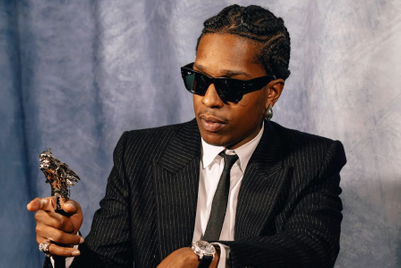
A few weeks ago, China announced economic growth is at its slowest pace since 1990. This news is probably keeping luxury brand managers up at night. The sector faired well through the economic instability of the last eight years, but that’s no excuse for complacency. Firstly, because non-luxury brands are starting to adopt the tools and attributes which formerly only luxury brands could deliver. Secondly, because one in three luxury goods is bought by the Chinese—so a wobble over there creates ripples on luxury-shop floors the world over.
“Luxury has to watch its back,” says Mark Tungate, author of Luxury World: The Past Present and Future of Luxury Brands, and Flamingo Hive Mind Expert. “It was always a slippery concept, but now it’s particularly so.” Traditionally there have been three areas where luxury has always excelled: delivering supreme service; craft and heritage; and being able to transcend the transaction. These meant you no longer think of your luxury spend in terms of money at all. But the tools that standard brands have at their fingertips today (primarily through technology) mean that these experiences can now be obtained at a fraction of the cost.
Technology companies are setting new standards in customer experience today. Amazon and Uber are showing how you can combine human contact and the right algorithms to create an intuitive and personalised service, that, unlike luxury, is available to many. After all, many would now consider the Apple user experience and level of individual care as a luxury experience. Likewise, a service like Dreamcheaper.com searches continually on your behalf for the cheapest room rate at your chosen hotel. All you have to do is email your dates—they then book on your behalf. Taking just 20 percent of the cost saving as their fee, the service feels more akin to a luxury concierge than hotel aggregator software.
|
These platforms are so well designed, we are even able to transcend the jarring reality of the financial transaction. “I consider Uber a luxury service,” says Tom Chatfield, author, Live This Book, How to Thrive in the Digital Age, and also a Flamingo Hive Mind Expert, “Uber is so well designed that you lose the concept that there is even money involved.” Isn’t that what luxury brands were all about?
So, what does that leave for the luxury sector to own? Even craft and heritage, once bywords for the time-honoured traditions at the heart of the luxury houses, are now becoming commonplace. The focus on process and provenance has become the new norm within consumer expectations. So much so, people have started to parody it through spoof brands such as the Timmy Brothers “Brooklyn-based makers of bespoke drinking water” whose hilarious video had plenty fooled.
So how can luxury brands celebrate their heritage without echoing this now well-worn language? Perhaps it’s less about heritage and more about legacy. Is this why Yves Saint Laurent and Dior felt they could consciously cull a part of their past? Both have dropped the ‘Yves’ and the ‘Christian’ respectively. With their founders no longer alive, this felt like one powerful way to keep the brand moving on.
It does feel like the only real path that luxury has to take now is innovation. Using it to keep the mass and premium brands on their toes and the luxury consumers engaged. Of course, Burberry is the ultimate innovation example, but we want to see more. And so does Mark Tungate: “Luxury brands haven’t really blown our minds lately. They are in a slight rut but there are ways of breaking out of that. They need to get out of their comfort zone.”
London’s Harvey Nichols did something like this in its recent campaign executed by Adam and Eve/DDB. Using gritty CCTV footage of the department store’s shoplifters, the brand took a bold step away from the usual luxury aesthetic toward something much more suited to millennial luxury tastes.
Likewise, Tungate suggests this could be achieved through the talent luxury brands choose to collaborate with. “Forget Mario Testino for once,” he says, “how about collaborating with someone who is emerging, someone who is a genius, someone from CERN”. Something to give the luxury brand managers a positive reason to stay awake at night.
Miriam Rayman is head of content for cultural intelligence at Flamingo London



.jpg&h=334&w=500&q=100&v=20250320&c=1)

.jpg&h=334&w=500&q=100&v=20250320&c=1)
.jpg&h=334&w=500&q=100&v=20250320&c=1)

.jpeg&h=334&w=500&q=100&v=20250320&c=1)


.jpg&h=334&w=500&q=100&v=20250320&c=1)






.png&h=268&w=401&q=100&v=20250320&c=1)

.png&h=268&w=401&q=100&v=20250320&c=1)